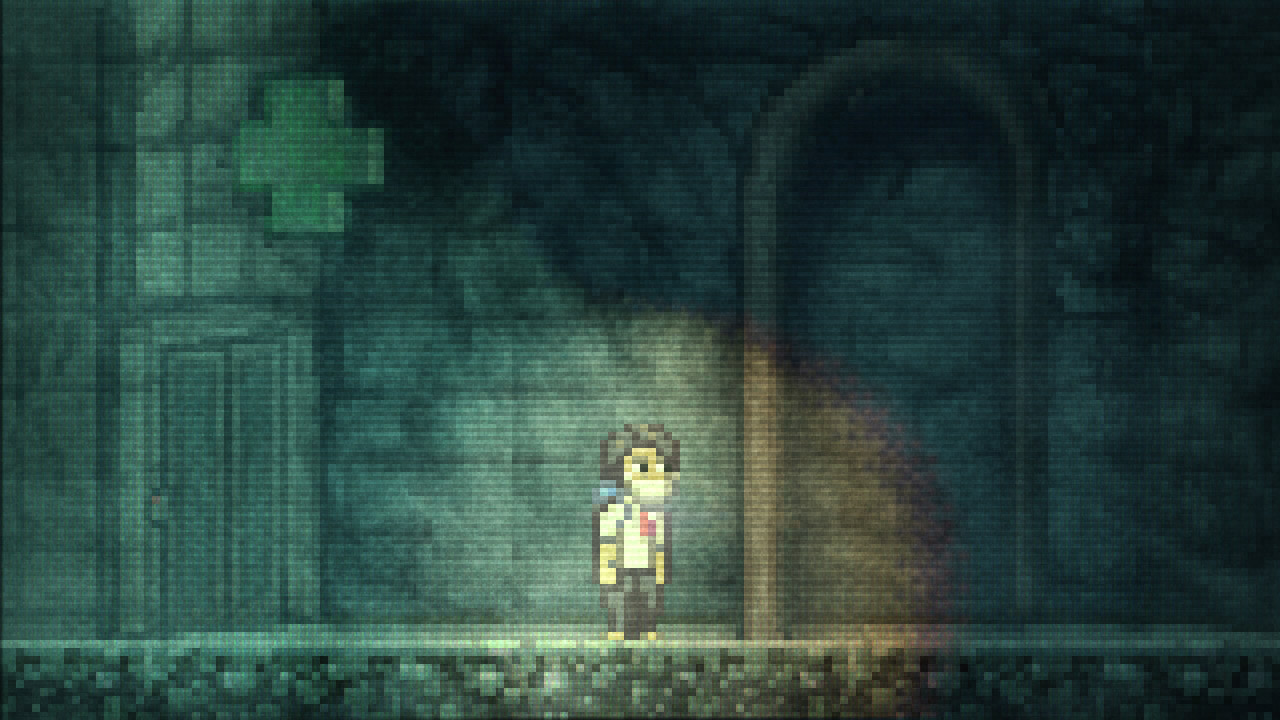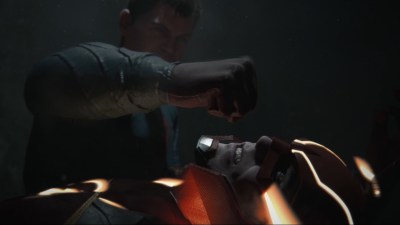On paper, it’s a game that really shouldn’t work.
Nothing about pixelated graphics, 2D side-scrolling, or speech bubbles shouts “successful modern survival-horror game,” but somehow Superflat Games’ Lone Survivor manages to take these bizarre elements and turn them into an eerie experience that will stick with you for a long time.
Vulnerability is the key to Lone Survivor’s success, not flashy graphics. The atmosphere is expressed as dark and oppressive more than adequately without flashy 3d effects and expensive lighting and the overall feeling of vulnerability is reinforced at every turn. Lone Survivor is a gritty, gory and disturbing survival horror true to its cause - it happens to come in the form of a pixelated side-scroller; but that doesn’t take away from it at all because that isn’t what makes Lone Survivor, what makes Lone Survivor is its enjoyable gameplay, its uncanny ability to create intrigue and delightfully confusing story that is open to interpretation.
In Lone Survivor, you play as “You,” a man in a surgical mask who is one of the few survivors of a zombie-like apocalypse. “You” has been held up in his apartment for quite some time however. Food is scarce and his mental state is fragile at best. Hunger and depression can make a man see, think and do terrible things. And so “You” will experience hallucinations as he searches for other survivors, motivated by a note that hints at their location.
Hallucinations aren’t the only thing you have to worry about, however. Zombie-like former-humans now roam the halls, and they are exceedingly dangerous. At first sight, they will run at you, and suddenly you have a decision to make. Do you hide in the shadows? Use some rotting meat as bait to distract them? How about distracting them with a flare, or shooting them with your pistol and its oft-limited ammo supply – keeping in mind that reloading may leave you open to vicious attacks? Planning when to shoot, run and reload, and how to make the best use of your environment and the limited tools at your disposal is a necessity if you wish to survive.
Between your exploratory forays into the outside world, your apartment serves as a hub in Lone Survivor and you find yourself returning here often in order to sleep (save), eat something more substantial than chips, or perhaps even make a nice cup of coffee (provided you have the necessary items). Left without sustenance for too long and your avatar’s complaints can grow repetitive and tiresome, occasionally hampering the carefully-crafted immersion by dragging you back and reminding you that you’re playing a game. A minor disappointment perhaps, but when the game does such an excellent job of creating and sustaining its atmosphere, the occasions when it unwittingly manages to undermine itself are felt all the more keenly.
Sleeping doesn’t only serve to save your game in Lone Survivor, it also prevents madness (the worse your mental state the worse your hallucinations get). It’s possible to combat lack of sleep with various pills, however these pills also severely damage your mental health. It should be noted that going a bit mental isn’t all bad: the worse your mental state not only increases the hallucinations you experience, but also the number of supplies and resources in your apartment. Whether this was to make it easier on players or to further drive the whole “are you actually a crazy person” idea isn’t clear. We like to imagine that your character thinks he’s eating a nice meal, when in reality he’s chewing drywall.
While exploring Lone Survivor’s creepy environments you often come across mirrors. These mirrors aren’t for checking out how you look (it’s the apocalypse after all, who cares?) but rather serve as a way to teleport back to your apartment. You stare into the mirror and after a while you’ll find yourself safe back at home. Is your entire journey nothing more and a madness-induced hallucination? Who knows.
Lone Survivor is constantly referencing your state of mind to the point where walking through a door can bring you to a loud party (an odd thing to do during an apocalypse, right?), an open field where a box-headed man stands, previously familiar rooms that have now suddenly changed in appearance, a dodgy vendor of sorts that insists that you call him “The Director” or a dream of conversations with a peculiar seated man, among others. It is eventually fairly difficult to interpret what is real and what is a hallucination and confusion is pretty commonplace, but this is completely intentional.
What really makes Lone Survivor work, though, is the sound. General creepy effects, monstrous screams, odd heartbeats and static varying in frequency and volume create a powerfully horrifying tone. The soundtrack is also to be praised even though music is only used in small specific moments, when it is used it is well suited to the moment and effectively transports you into the nightmarish world. The game really benefits from being played with headphones, and the (comparatively) small display of the Vita doesn’t do anything to harm the overall sense of immersion. If anything, playing on a handheld enhances it, as using a dpad and face buttons feel more tactile and natural than playing with a keyboard on a PC.
Elsewhere, the Developer’s Cut part of the title refers to some additional content not present in the original release. There’s new rooms to explore and a smattering of new items and endings to be uncovered, and a New Game+ mode acts as a barrier to some of the more memorable content on offer - something which is slightly disappointing. There’s already enough incentive to replay the game through the additional endings on offer, so hiving off a portion of the content on offer until a second playthrough of the game’s 3-to-7 hour campaign feels slightly artificial and unnecessary. It’s a small grumble, however, particularly when the experience is suspenseful and imaginative enough to make you want to stay engrossed in Lone Survivor‘s mournful, doomed world.
Trying to convince someone that a 2D retro-style game can be just as scary as something such as Outlast is no small task, but any skepticism gets thrown out the window within minutes of booting the game up. With headphones on and in a darkened room, Lone Survivor accomplishes a hell of a lot despite its minimalist retro styling.
Lone Survivor is a pixelated nightmare, but in the best possible meaning of the phrase. Take the plunge and it won’t be long before you forget you’re staring at a collection of pixels on a screen. It’ll just be You, a hostile and unforgiving world, and the ever-widening cracks in your sanity.



